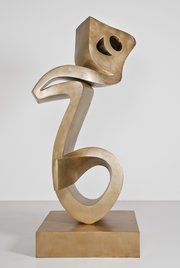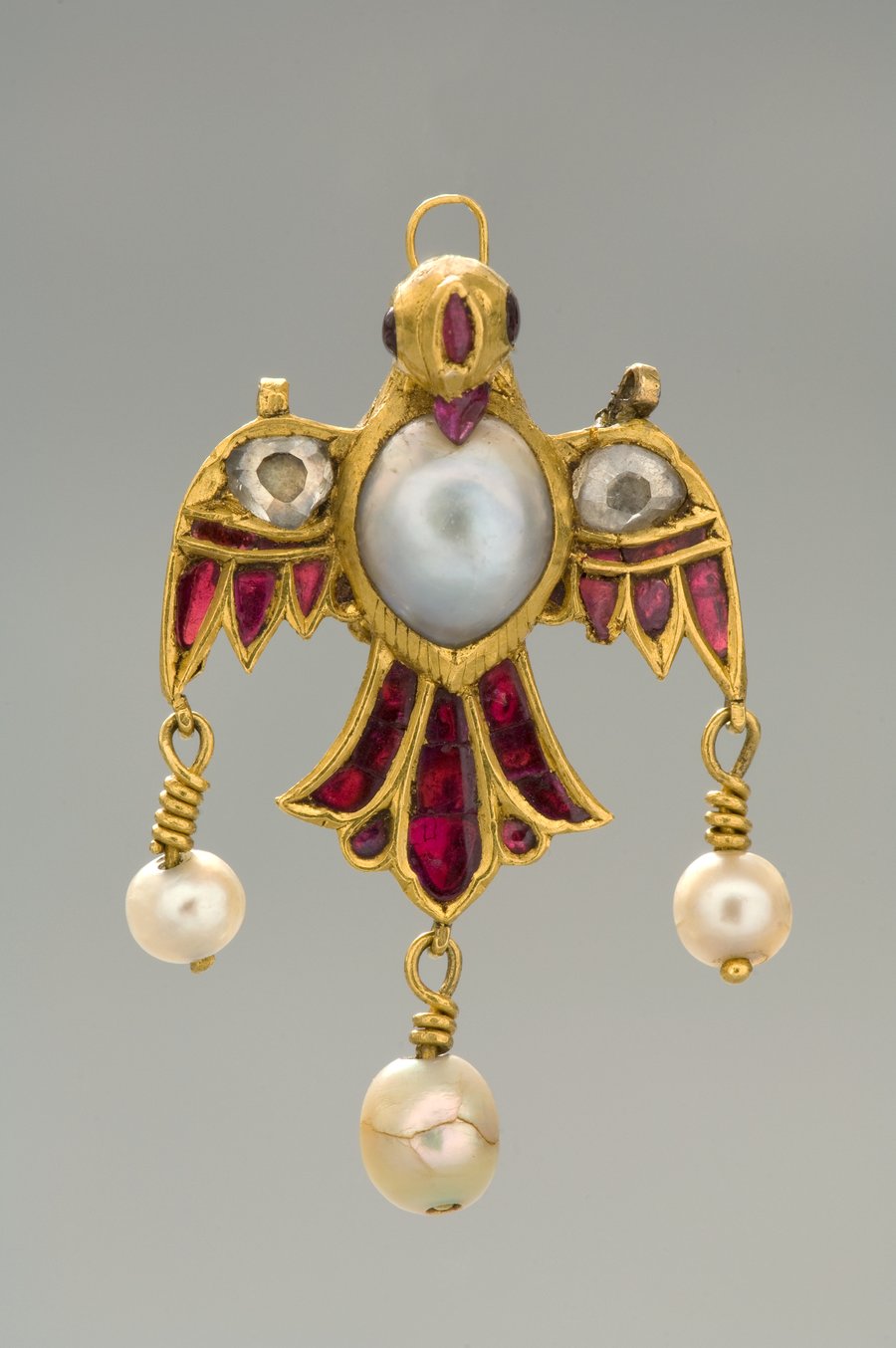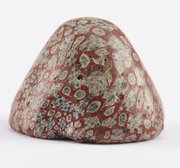
Head Ornament
Museum of Islamic Art
- Title:
- Head Ornament
- Production place:
- India
- Date:
- 1700 - 1799
- Period:
- Mughal
- Title:
- Head Ornament
- Production place:
- India
- Date:
- 1700 - 1799
- Period:
- Mughal
- Material:
- Ruby, Pearl, Gold, Diamond, Solder
- Technique:
- Gem setting, Gem cutting, Kundan, Soldering
- Dimensions:
- 4.2 × 2.6 × 1.3
This exquisite small jewel, known as a tikka, is a type of pendant commonly worn as a forehead ornament by girls and women from the 12th century AH/18th century CE onwards. However, its small size suggests that it could have also been intended as a turban jewel for a boy or young man. Placed in the centre of the forehead, such an ornament was intended to invoke the 'third eye', an auspicious symbol practiced by Hindu believers and often interpreted as an indication of one's religion or caste. This particular tikka is made in the form of a parrot (kili), with its outstretched wings meant to signify protection. The body is made of gold and set with a natural pearl, while the long feathers of the wings and tail are set with calibrated rubies, each with a single pearl suspended.



